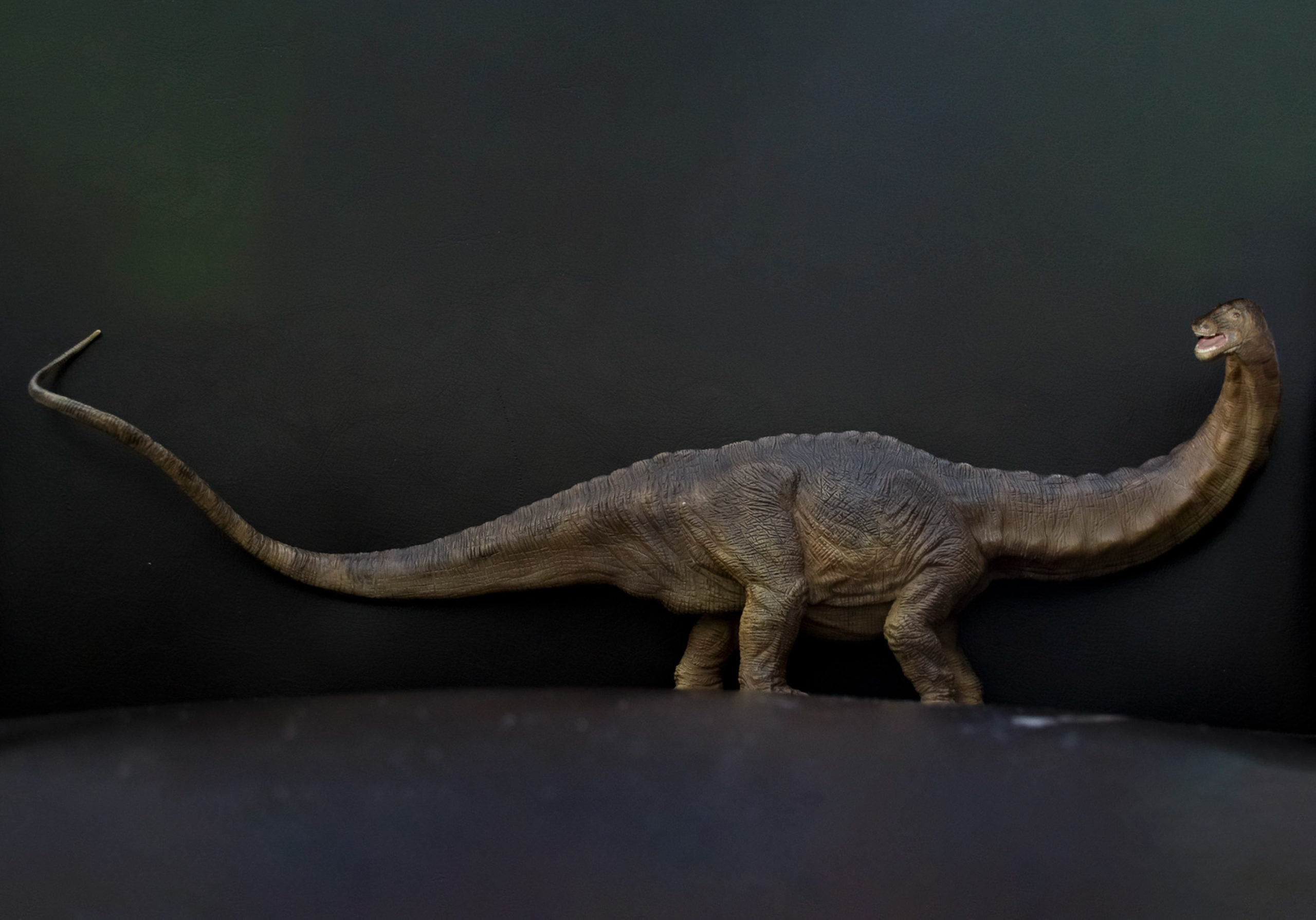Very fast, but still not supersonic
Study on the mobility of long-necked dinosaur tails
 © Zachi Evenor
© Zachi Evenor
An international research team with the participation of the Department of Biology at the University of Hamburg has analysed the mobility of dinosaur tails with the help of computer models and methods from the engineering sciences. According to a study published in the journal Scientific Reports, the researchers found that these tails could move at speeds of more than 100 kilometres per hour. However, contrary to previous assumptions, they did not reach supersonic speeds.
Diplodocids were large herbivorous dinosaurs with long necks and long tails. A previous study suggested that a hypothetical structure at the end of a diplodocid’s tail, similar to the end of a whip, could move faster than the speed of sound (340 metres per second) and produce a sonic boom.

A 3D animation of the reconstructed tail movements. © Simone Conti
To test this hypothesis, the international research team simulated the movements of diplodocid tails using a model based on five fossil diplodocid skeletons. The virtual tail model is over 12 metres long, would weigh 1,446 kilograms in real life, and consists of 82 cylinders meant to represent vertebrae attached to an immobile virtual pelvis.
“The research was quite challenging because we had to approach the problem using two methods normally used in aerospace engineering: multibody simulation and estimation of the load capacity of the materials,” reports the study’s first author, Simone Conti of Universidade NOVA de Lisboa and Politecnico di Milano.
The researchers now tested whether their model tail could withstand the stress of moving fast enough to generate a sonic boom. To do this, the base of the tail was moved in an arc, creating a whip-like movement. They found that the thin tail could not move at a maximum speed of 340 metres per second without snapping.
They then examined three different hypothetical structures, one metre long, attached to the end of the model tail to mimic the end of a whip. The first structure consisted of three skin and keratin segments, the second of braided keratin threads and the third of soft tissue whose shape was modelled on a medieval tool, the flail. The result: none of the structures was able to withstand the stress of a movement at 340 metres per second. Thus, both different analyses showed that the tail end of diplodocids probably could not reach supersonic speed.
The simulations suggest that diplodocid tails could only reach a maximum speed of 33 metres per second (more than 100 kilometres per hour). While this is very fast, it is more than ten times slower than the speed of sound and therefore too slow to produce a sonic boom, contradicting the earlier study.
“So although diplodocid tails could not move fast enough to produce a sonic boom, it is likely that they could be used as defensive weapons or in combat with other diplodocids. Whether this was in a territorial fight or in competition for reproductive partners remains speculative, of course,” says palaeontologist Dr Emanuel Tschopp, Alexander von Humboldt Research Fellow at the Department of Biology at the University of Hamburg and co-author of the study.
Paper
Multibody analysis and soft tissue strength refute supersonic dinosaur tail, S. Conti, E. Tschopp, O. Mateus, A. Zanoni, P. Masarati, and G. Sala, Scientific Reports, 12:19245 (2022). DOI: https://doi.org/10.1038/s41598-022-21633-2
Contact
Dr. Emanuel Tschopp
Research Associate, Animal Biodiversity Section (University of Hamburg)
Dinosaur research
+49 40 42838-5621
Emanuel.Tschopp@uni-hamburg.de


